What Is Tobiko?
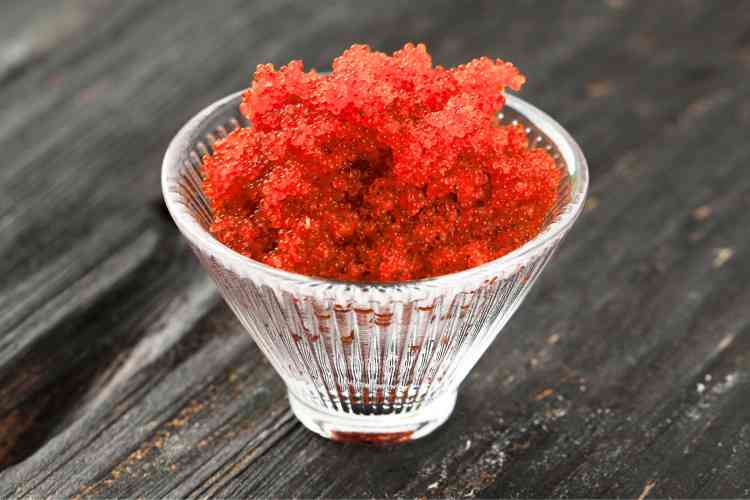
Tobiko — ever heard of it? You may feel confident in your knowledge of Japanese cuisine and sushi, from sashimi to uramaki, but here's a little secret ingredient that often flies under the radar: tobiko.
In this article, we'll break down exactly what tobiko is and how you can incorporate it into your cooking to add an extra layer of flavor and texture. So, if you are ready to explore the world of tobiko, keep reading!
Jump to Section
- What Is Tobiko?
- Tobiko vs. Masago
- Tobiko vs. Caviar
- Is Tobiko Healthy?
- How To Use Tobiko
- Where To Buy Tobiko
What Is Tobiko?
Tobiko are the small and colorful balls that you often find on top of sushi. While they certainly add visual appeal to sushi, their role goes beyond aesthetics. These tiny delicacies, also known as fish roe eggs, contribute to both the flavor and texture of sushi.
But where do they come from? Tobiko originates from the roe of the female flying fish, known for its impressive leaps above the ocean's surface. The most prevalent tobiko varieties used in sushi hail from species like Cheilopogon agoo, a Japanese flying fish.
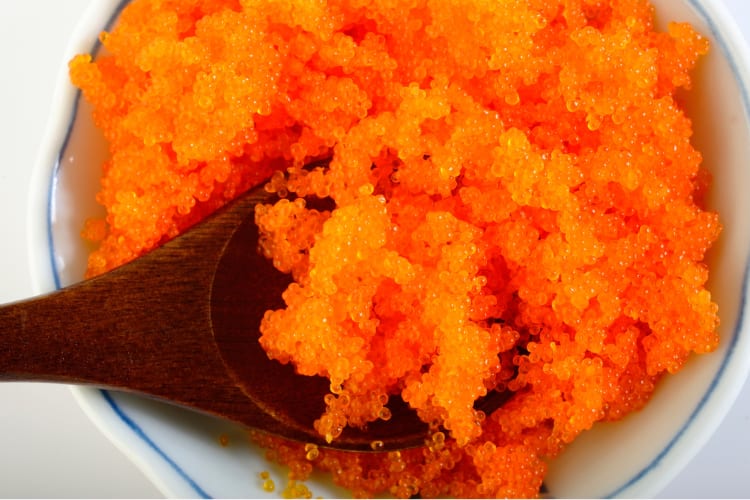
How Many Types of Tobiko Are There?
Tobiko can differ depending on what species of flying fish roe it comes from and how it is prepared. Food dye and reactions with other ingredients shape tobiko’s color. It is infused with many natural foods to add color and sharpen the flavor, such as wasabi.
There are six main tobiko types: yellow, red, red-orange, black, green and golden. These types of tobiko have the following characteristics:
- Golden tobiko is in its fresh and natural form. Only salt is added to this aesthetically pleasing tobiko.
- Red-orange tobiko is unflavored apart from the addition of salt. However, it is dyed orange to make the vibrant tobiko that is used most often as a garnish.
- Red tobiko's color is normally produced with chilies but beets can be used as well. Of course, chile-infused red tobiko will be spicier than tobiko made with beets.
- Yellow tobiko is normally created by mixing it with yuzu, with the result being a wonderful zesty tobiko. However, it can be mixed with other citrus fruits as well.
- Black tobiko is often infused with nuts and is black due to the addition of squid ink.
- Green tobiko is made by adding wasabi to it. Sugar, soy sauce, mirin, vinegar and more are often used alongside color dye to make wasabi tobiko even more green.
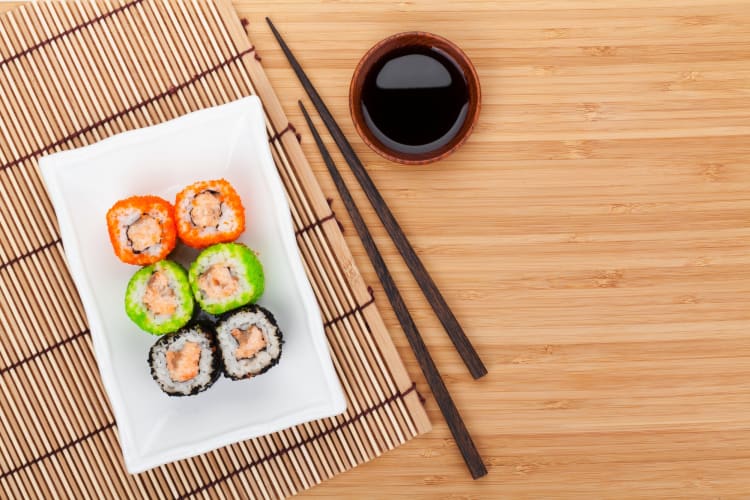
What Does Tobiko Taste Like?
Tobiko normally has a salty and soft yet somewhat crunchy taste, especially when served in large amounts on sushi. As mentioned above, some tobiko varieties can have a citrus, spicy or nutty flavor. These tiny eggs are not just decorative, though. When used in a decent portion, they certainly deliver a lot of flavor. Through harvesting and preservation, the eggs gain a smoky and fishy flavor, similar to seaweed.
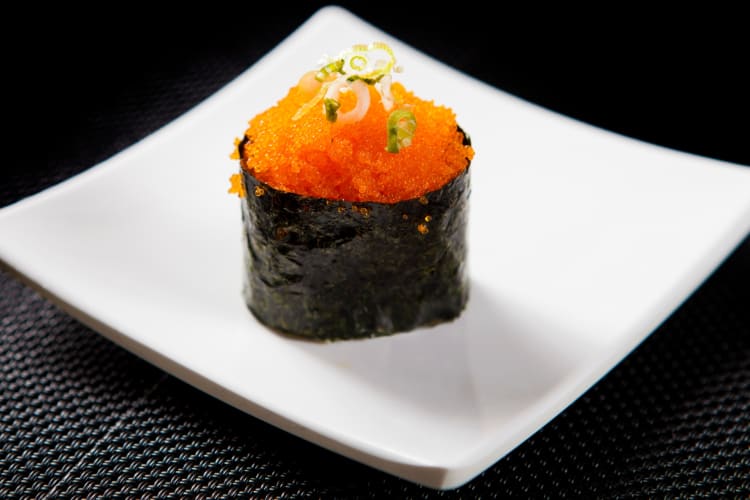
What Is Tobiko Sushi?
Tobiko is perfect for adding on top of different types of sushi due to its salty taste and aesthetically pleasing color. For example, tobiko is often used on nigiri and maki to give it extra flavor. Its slightly crunchy texture additionally provides a satisfying contrast to the softness of the sushi rice and fish.
Even a small amount of tobiko can elevate your sushi experience, providing a delicious crunch and extra flavor without overwhelming the primary flavors of the sushi. If you're looking for simple yet impressive sushi ideas for beginners, consider incorporating tobiko into your culinary creations.
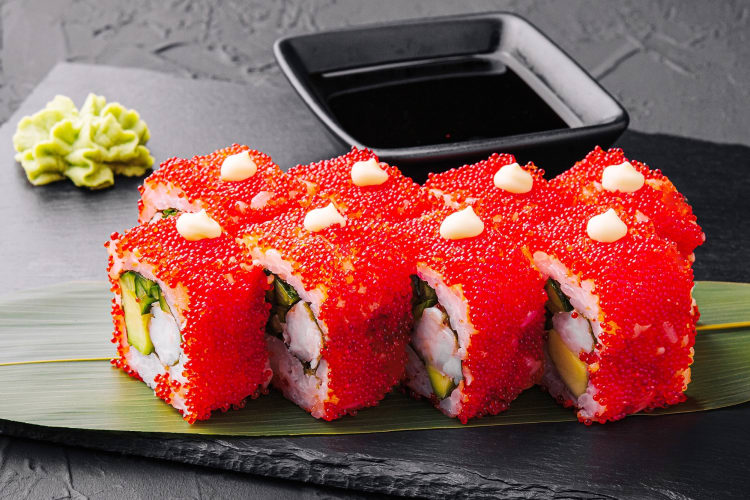
Tobiko vs. Masago
Masago is another type of fish roe but this variety comes from capelin fish. Tobiko, on the other hand, comes from flying fish that are found in more tropical waters. This fundamental difference extends to the appearance and flavor profiles of the roe. Tobiko is known for its vibrant colors and bold flavor, whereas masago typically has a muted hue and a milder taste.
Tobiko eggs are larger and more diverse in color, making them pricier but more versatile. On the other hand, masago eggs are smaller and more affordable. In terms of sustainability, masago is considered more environmentally friendly because capelin populations are more abundant than flying fish. In sushi, masago is often used as a cost-effective alternative to tobiko due to its smaller size and milder flavor.
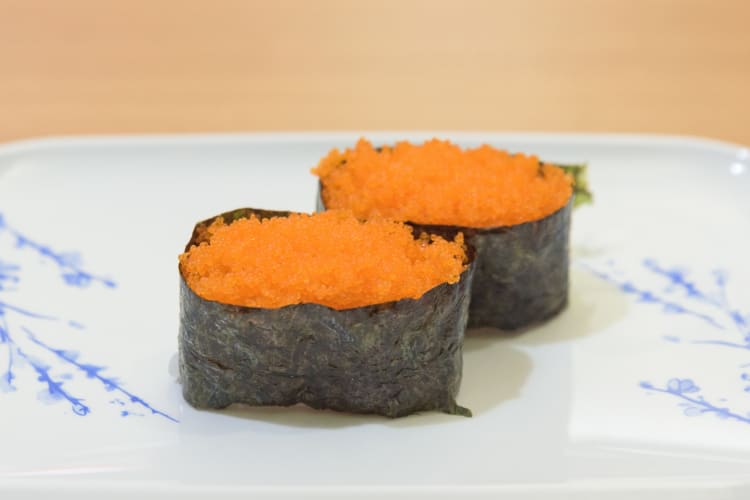
Tobiko vs. Caviar
Like masago, caviar originates from a different fish egg compared to tobiko. Caviar is sourced from the sturgeon fish and tends to have a less vibrant color. However, like tobiko, the flavor of caviar varies depending on its type and can range from subtle to intense, making it suitable as both a primary ingredient and a stunning garnish.
Due to overfishing, caviar is a lot more expensive than tobiko. While tobiko may not steal the spotlight like caviar, its flavor should not be underestimated. Tobiko may not have the robust flavor profile of caviar, but it adds nuanced tastes and textures to sushi, making it a valuable ingredient in its own right.
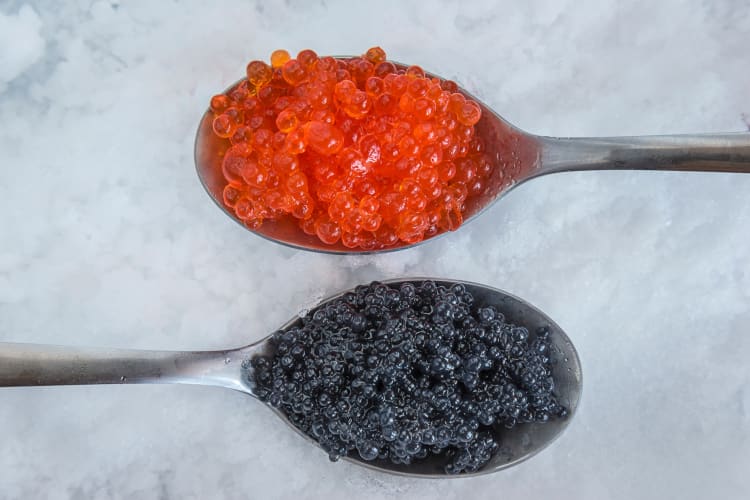
Is Tobiko Healthy?
Tobiko has many nutritional benefits, but like all foods, it is not exempt from having drawbacks. Rich in omega-3 fatty acids, tobiko supports heart health and cognitive function. Also, tobiko is a complete protein and has all nine essential amino acids, helping you to build and maintain muscle whilst promoting a strong immune system.
Additionally, tobiko is packed with essential vitamins, such as A, B12, D and E. It also has minerals like selenium and iodine, which help to support crucial bodily functions, such as vision and the immune system. Finally, it has low carbohydrates and calories.
In terms of drawbacks, individuals with seafood allergies should steer clear of tobiko, and pregnant women will want to exercise caution due to the risk of foodborne illness associated with raw or undercooked seafood. While tobiko contains less mercury than some other seafood options, it's still advisable to moderate consumption, especially during pregnancy.
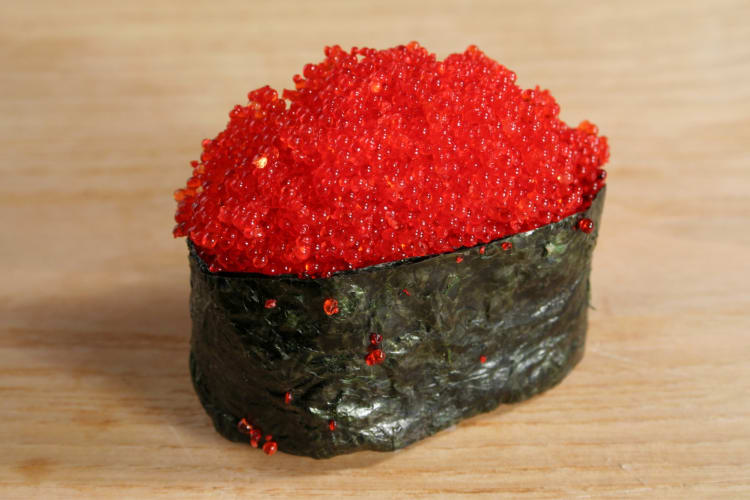
Is Tobiko Gluten-Free
This is a crucial question for those who want to try tobiko sushi, but need to have a gluten-free diet. Tobiko is gluten-free as long as it is not prepared with soy sauce, which generally contains gluten.

How To Use Tobiko
As we’ve hinted at already, tobiko is used in Japanese dishes, primarily as a garnish for sushi. Its small size makes it perfect for a small crunchy feeling in the mouth and its vibrancy makes sushi even more appealing to our eyes. It can even be served as the star of a sushi dish, such as tobiko gunkan maki, which features rice wrapped in nori and shaped like a boat, with plenty of tobiko added on top.
Beyond sushi, tobiko adds flair to seafood plates and salads. Tobiko's versatility extends even more, as it can also be paired with crackers for a simple yet satisfying snack.
If you want to learn how best to use these colorful eggs in recipes, cooking classes near you that focus on sushi-making for beginners are the way to go. Likewise, online cooking classes are fantastic if you are limited in time, but want to try sushi-making from your own kitchen. When making sushi at home, be sure to pick up a sushi-making kit that includes all the tools you need to prepare impressive, and tobiko-topped, sushi.
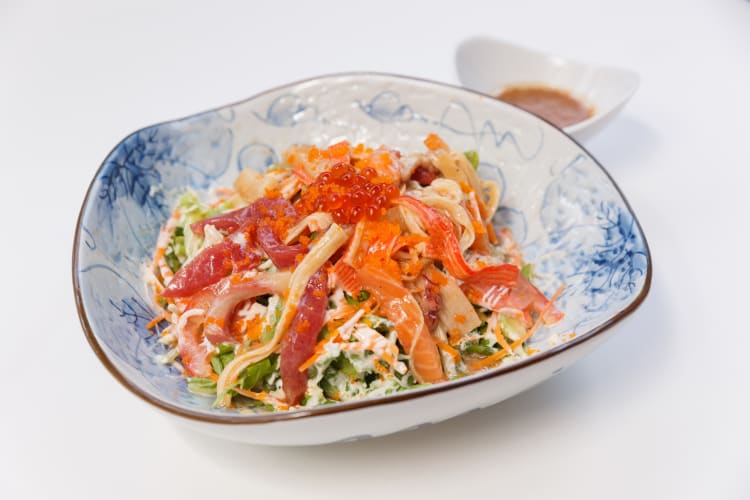
Where To Buy Tobiko
While tobiko may not be readily available in standard supermarkets, it's commonly found in Asian markets and specialty stores. Whole Foods is also likely to carry it.
When it comes to storage, tobiko behaves much like other perishable foods. If you purchase tobiko frozen, don't refreeze it after thawing, and consume it within five days of defrosting. When storing in the fridge, keep an eye on the expiration date. An unopened jar or tin of tobiko can typically last in the fridge for 10 to 14 days. Once opened, consume within a week.
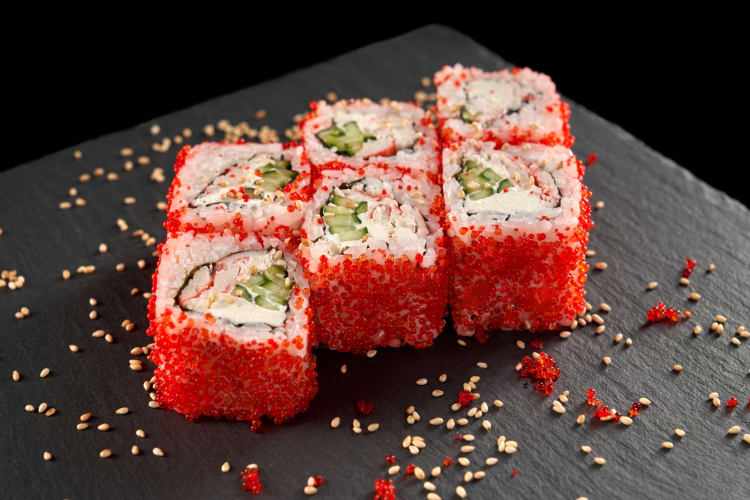
Tobiko is a versatile food that can do wonders when combined with sushi. Although tobiko may come at a higher price point compared to masago, its versatility in flavor and color sets it apart. Moreover, it can serve as a viable substitute for caviar in various culinary creations. We trust this guide has shed light on what tobiko is and will allow you to confidently incorporate it into your culinary adventures!
For even more ways to explore your favorite foods, check out other experiences happening on Cozymeal.



FOOD FOR THOUGHT?
Join the conversation.